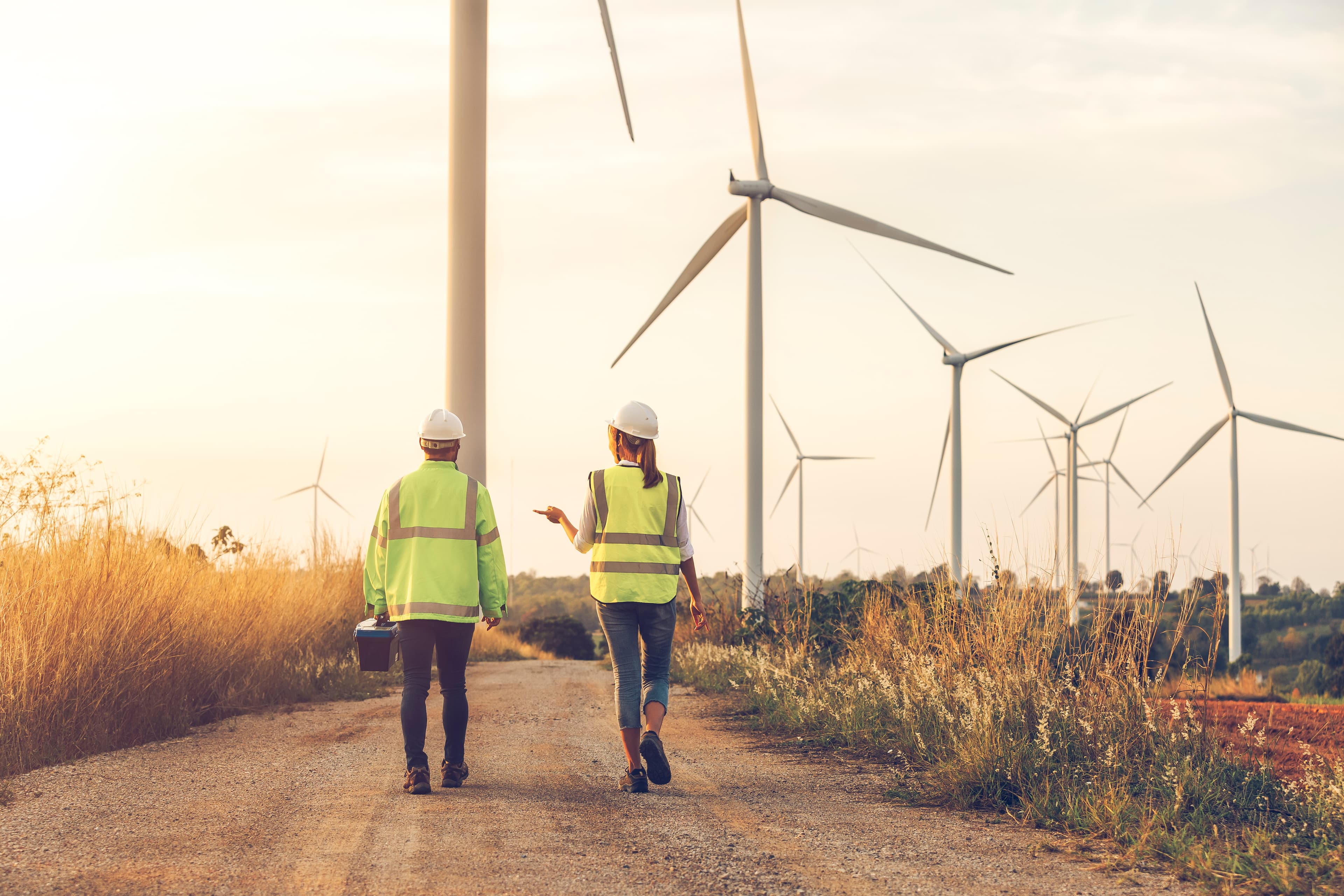
Introduction to Wind Energy
Wind energy, a form of renewable energy, harnesses the power of the wind to generate electricity. Wind turbines convert kinetic energy from wind into mechanical and then electrical energy, providing a sustainable and environmentally friendly power source.
How Wind Turbines Work
Wind turbines operate on a simple principle: converting the kinetic energy of wind into electrical energy. Here's a basic step-by-step breakdown:
Wind Interaction:
Wind flows over the blades creating lift (similar to the effect on airplane wings), which causes the blades to turn.
Rotational Movement:
The blades are connected to a low-speed shaft. When the wind turns the blades, the shaft also turns.
Power Generation:
The low-speed shaft is connected to a gearbox, which increases the rotational speed, transferring this motion to a high-speed shaft.
The high-speed shaft drives a generator, which converts the mechanical energy into electrical energy.
Power Distribution:
The generated electricity is sent to a transformer, which adjusts its voltage according to the grid requirements.
The electrical energy is then distributed through the grid to power homes, businesses, and other facilities.
Types of Wind Turbines
Horizontal Axis Wind Turbines (HAWT):
- Most common type.
- Consists of two or three blades that face into the wind.
Vertical Axis Wind Turbines (VAWT):
- Blades are mounted vertically relative to the ground.
- Can capture wind from any direction.
Wind Turbine Components
-
Blades: Capture the wind’s kinetic energy.
-
Rotor: Consists of the blades and the hub to which the blades are attached.
-
Generator: Converts mechanical energy into electrical energy.
-
Nacelle: A cover housing all of the generating components in a turbine, including the generator, gearbox, drive train, and brake assembly.
-
Tower: Supports the rotor and nacelle and elevates them to an optimal height to capture wind.
Advantages of Wind Energy
-
Renewable: Wind energy is inexhaustible and sustainable.
-
Environmentally Friendly: No greenhouse gas emissions during operation.
-
Economic Benefits: Job creation in manufacturing, installation, and maintenance.
Challenges and Considerations
-
Intermittency: Wind is not constant and can be unpredictable.
-
Location Dependent: Effective wind energy generation requires optimal wind conditions, often found in remote locations.
-
Environmental and Aesthetic Concerns: Noise, impact on bird populations, and visual aspects can be concerns.
-
Initial Costs: High upfront costs for wind turbine installation and infrastructure.
Future of Wind Energy
-
Technological Advancements: Ongoing research and development to increase efficiency and mitigate challenges.
-
Offshore Wind Farms: Exploitation of offshore wind, which tends to be stronger and more consistent.
-
Integration with Other Renewables: Developing smart grids to combine various renewable energy sources efficiently.
-
Global Expansion: Growing adoption in countries around the world to meet renewable energy targets.
Wind energy plays a vital role in advancing sustainable power generation globally. Despite certain challenges, technological innovations and an increasing understanding of how to harness and integrate wind power are propelling this renewable energy source into a cornerstone of future energy strategies.